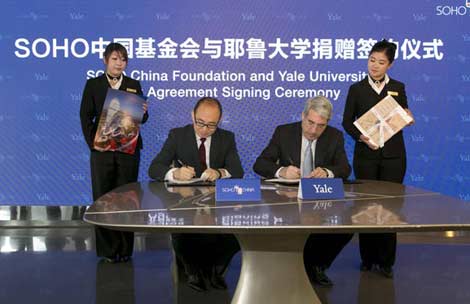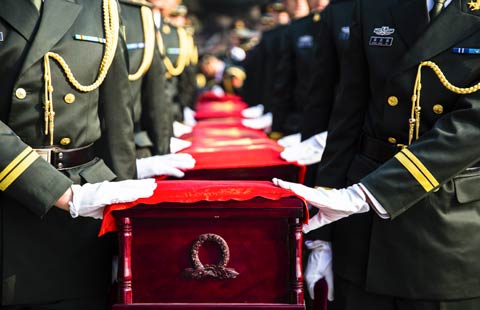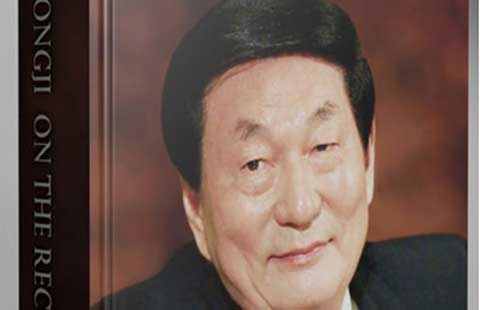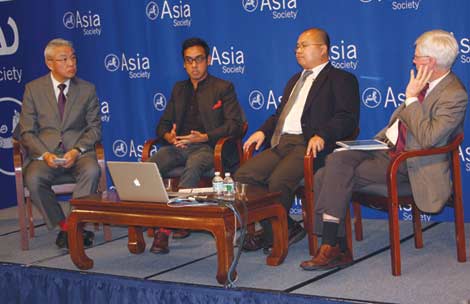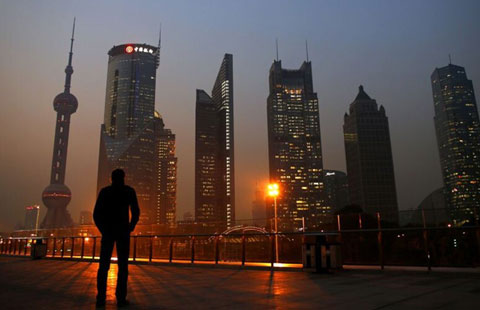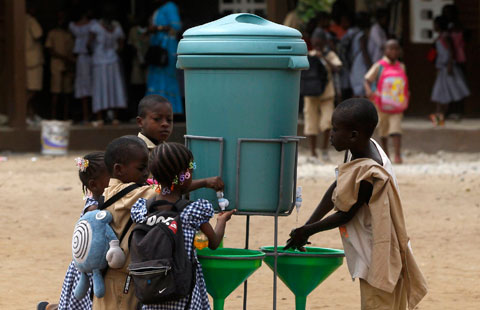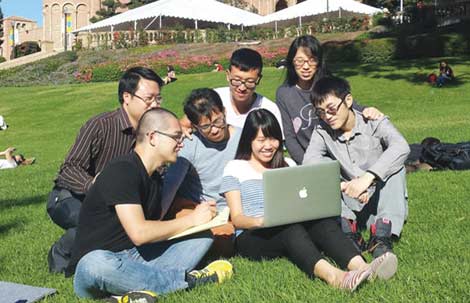'God father' of HK art honored for Smithsonian exhibit
Updated: 2014-07-08 14:49
By AMY HE in New York(China Daily USA)
|
||||||||
 |
|
Hong Kong contemporary artist Danny Yung at a luncheon in New York hosted by the Hong Kong Economic and Trade Office, celebrating the successful run of Yung's art installation for the Smithsonian’s Center for Folklife and Cultural Heritage. Yung designed a flower plaque bamboo installation that was on display in Washington's National Mall. AMY HE / CHINA DAILY New York |
The "godfather" of Hong Kong contemporary art, Danny Yung, was honored by the Hong Kong Economic and Trade Office after his installation for the Smithsonian Center for Folklife and Cultural Heritage successfully finished its run in Washington.
Commissioned by the center, Yung was asked to create a piece that centered on the theme of "folklife" and the Shanghai-born artist produced a 40-meter-wide, 10-meter-high flower plaque bamboo installation on the National Park in Washington, garnering more than 1 million visitors during its two-week run.
The flower plaque installation — called a fa paai in Cantonese — is one of the biggest installations ever built in the Smithsonian Center's annual festival and was on display from June 25 to July 6. Titled Gateway – Tian Tian Xiang Shang, it was designed by Yung and built by craftsmen from the Wing Kei Flower Store Ltd in collaboration with the West Kowloon Cultural District Authority. The fa paai is traditionally displayed in Hong Kong for celebratory events, such as weddings, family gatherings, or store openings, combining cultural heritage and artistic exchange, Yung said.
When the center initially commissioned him, Yung said he was unsure of the theme, because as a contemporary artist, he didn't know if he could make something in response to the idea of traditional folklife. But he said the importance of being able to spotlight Asian culture at a historic American location motivated him to take the challenge.
"The most important thing I wanted to do was deal with the cross-culturalism. I wanted to see how we can cope with the new challenges that's coming up [between China and the US], which have been around for quite a while," he told China Daily at the celebratory event held in New York on Monday.
"I think crossover is so important in dialoguing. If we [changed] our positions, I think we'll see things differently. I think we gain new perspectives and new sensitivities, so what I did with my installation is include a big wall, like the one in Tiananmen Square, but in the middle there's a gateway, so people can walk through it so that they can see where they come from, so they can learn what's on the other side," he said.
On the installation are four-character Chinese proverbs that begin with the character for "sky" — the title of the exhibit is one such proverb, meaning "to make progress every day" — which Yung said is a huge focal point in Chinese culture.
"Sky is so important in China, because China is an agricultural country. You have to look at the sky — if it rains, if it rains too much, if it's shining, if it's shining too much. All this affects the crops. So I did some studying and I traced many proverbs that start with the character ‘sky' and I collected about 160 or something, and I picked 16 of those" to display on the installation, he said.
"Everyone would agree that the four-character idiom is the essential step to understanding the thousands of years of Chinese culture," Yung said in an artist statement about the installation. "My childish opinion was that the idiom ‘look up to the sky as you conduct your life' is to remind us to watch the weather forecast, as it can help us determine whether or not to carry an umbrella when we go out; perhaps I understood the sky to represent seasons, the sun, and rain, which predicts the yearly harvest."
Featured in the installation is a statue of a mouthless child named Tian Tian who points up at the sky, symbolizing a person who's always striving to make progress every day, something that Yung said he wants to share in a dialogue between US-China artistic exchange.
"I hope new sensitivities [arise from those who visit the installation], as does a new way of looking at oneself. It's one important part of cultural exchange," he said. "Creativity too, because when I create a piece of work, I think that I learn more about myself and what I don't know."
- Xinjiang publishes anti-terror brochures
- Security pact sealed with Afghanistan
- President Xi encourages international cultural exchanges
- Premier Li: China willing to help Afghan infrastructure
- Chinese FM: China, Asia-Pacific become community of shared destiny
- Foreign minister remarks on possibility of China-Japan summit
Most Viewed
Editor's Picks

|

|

|

|

|

|
Today's Top News
VW defends safety of recalled New Sagitar
Former premier makes Hurun philanthropists list
Xinjiang publishes anti-terror brochures
SOHO endows $10m to Yale
Cook and Ma talk about partnership
Language a barrier to healthcare for Asian Americans
China businesses need innovation: VC
Security pact sealed with Afghanistan
US Weekly

|

|
